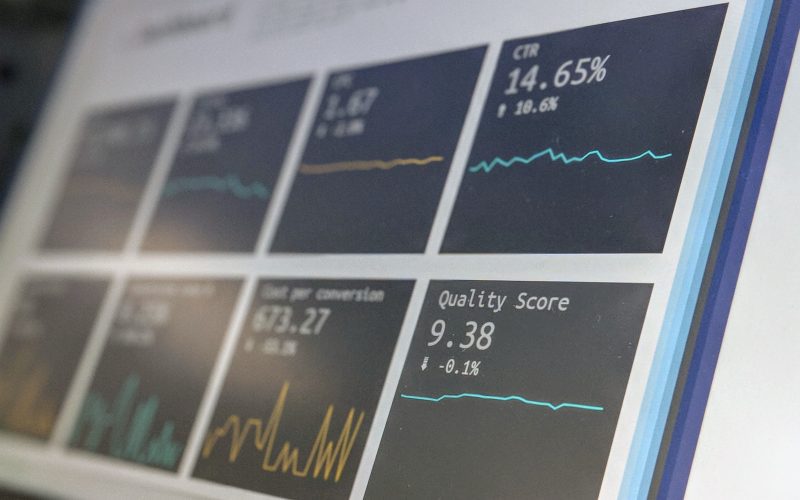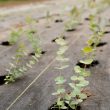Farming has come a long way since the days of simply sowing seeds and hoping for the best. Today, farmers have access to an abundance of data that can help them make informed decisions about everything from soil health to weather patterns. By using data-driven farming techniques, farmers can maximize their crop yield and ensure food security for communities around the world. In this blog post, we’ll explore the importance of data in farming, different types of farm data, how to collect and analyze it, and ultimately how it can be used to improve crop yields.
The Importance of Data in Farming
Farming is a complex and dynamic industry that relies on a multitude of factors to be successful. However, one of the most important components in modern farming operations is data. Data provides crucial insights into everything from weather patterns to soil health, which can help farmers make informed decisions about their crops.
In today’s world, farmers are facing increasing pressure to produce more food with fewer resources. This is where data comes in – by collecting and analyzing information about their fields, farmers can optimize every aspect of their operation for maximum efficiency.
Data also allows farmers to make proactive decisions when it comes to crop management. For example, if an analysis shows that there is a particular pest problem in the area or that certain nutrients are lacking in the soil, the farmer can take action before any damage occurs.
Moreover, data helps create transparency and traceability throughout the entire supply chain process. It ensures accountability and sustainability while empowering producers with actionable information they need to maintain profitability.
Data-driven farming techniques offer immense potential for maximizing crop yield while minimizing environmental impact. By leveraging this technology effectively, we have an opportunity not only to feed our growing population but also do so sustainably for generations to come!
Different Types of Data Used in Farming
Farming is a complex process that requires the collection and interpretation of various types of data to make informed decisions. Farmers collect different types of data such as weather patterns, soil moisture content, crop yields, equipment performance among others.
Weather data helps farmers predict rainfall and temperature changes which play a significant role in plant growth. Soil moisture sensors provide information on soil water availability which enables farmers to determine when it’s time to irrigate crops.
Crop yield data provides an overview of how well plants are growing over a specific period. This information allows farmers to determine if they need additional inputs like fertilizers or pesticides.
Equipment performance metrics help identify potential issues with farming equipment before they cause significant damage. This type of data also helps improve operational efficiency by identifying areas where machines can be optimized for better results.
Satellite imagery gives farmers insights into their fields from above. They can use this information to monitor crop health, detect pest infestations early on and track any abnormalities in field conditions such as drought stress or flooding events.
Different types of farm-related data contribute significantly to maximizing crop yields through improved decision-making processes based on accurate insights obtained from them.
How to Collect and Analyze Farm Data
To maximize crop yield, farmers must collect and analyze data on their crops regularly. The first step in this process is to identify the types of data that are relevant to your farm’s needs. This can include weather patterns, soil moisture levels, nutrient content, pest infestations and more.
Once you have identified the necessary data for your farm, it’s important to use appropriate tools like sensors and drones that can help collect accurate information. These technologies allow for real-time monitoring of crops without disturbing the plants or the soil.
The next step is analyzing the collected data using specialized software that allows farmers to make informed decisions about their crops. This means interpreting complex datasets as well as identifying trends over time such as changes in temperature or rainfall patterns. Farmers can then use these insights to modify their farming practices accordingly by adjusting irrigation schedules or applying fertilizers where needed.
Another key aspect of collecting and analyzing farm data is ensuring its accuracy through regular testing and calibration of equipment used during collection like sensors or drones. By paying attention to details like these, farmers can be confident they are working with reliable information which will lead them towards better results.
Collecting and analyzing farm data may seem daunting at first but it’s important not just for increasing crop yields but also improving sustainability efforts for agriculture industry as a whole through precision farming techniques which reduce waste while maintaining productivity levels year after year!
Using Farm Data to Improve Crop Yield
Farm data can be a powerful tool in maximizing crop yield. By collecting and analyzing various types of data, farmers can gain valuable insights into their fields and make informed decisions to optimize growth conditions for their crops.
One type of farm data that can be used is weather information. Farmers can collect daily temperature, humidity, and precipitation readings to track growing conditions over time. This information can then be used to adjust irrigation schedules or apply fertilizer more effectively based on current weather patterns.
Soil testing is another form of farm data that can provide useful insights. Soil samples are collected from different parts of the field and tested for nutrient levels, pH balance, and other factors that may impact crop growth. By understanding the specific needs of each area within the field, farmers can tailor their planting strategies accordingly.
Farmers also use yield mapping technology to gather information about crop performance in different areas of their fields. Yield monitors attached to harvest equipment measure how much grain or other crops are being produced per acre throughout the season. This allows farmers to identify areas where yields are lower than expected so they can investigate potential causes such as soil compaction or pests.
By utilizing all these forms of farm data together with advanced analytics tools like machine learning algorithms or predictive modeling software – farmers have an opportunity not just maximize crop yield but also avoid unnecessary costs by making informed decisions based on actual figures rather than guesswork
Conclusion
Data-driven farming techniques have revolutionized the agricultural industry by providing farmers with valuable insights about their crops. This has enabled them to make informed decisions that maximize crop yield and minimize losses. By collecting and analyzing different types of farm data such as weather patterns, soil composition, pest infestations, and plant growth rates, farmers can identify areas that need improvement and take appropriate action.
Furthermore, technological advancements in precision agriculture equipment have made it easier for farmers to collect accurate data on a large scale. With this information at their disposal, they can optimize crop inputs such as water usage, fertilizer application rates and timing of sowing which ultimately leads to increased yields.
Incorporating data into farming practices not only benefits the farmer but also contributes to sustainable agriculture by reducing waste and increasing efficiency. As we move towards a future where food production needs are growing rapidly due to population increase; ensuring maximum yield is more important than ever before. Hence using innovative methods like data-driven techniques will help us meet the demands without putting too much pressure on natural resources or degrading soil quality.
By embracing these modern farming techniques today, we secure our food supply chain for tomorrow’s generations while maintaining ecological sustainability – all thanks to the power of big-data analysis!












